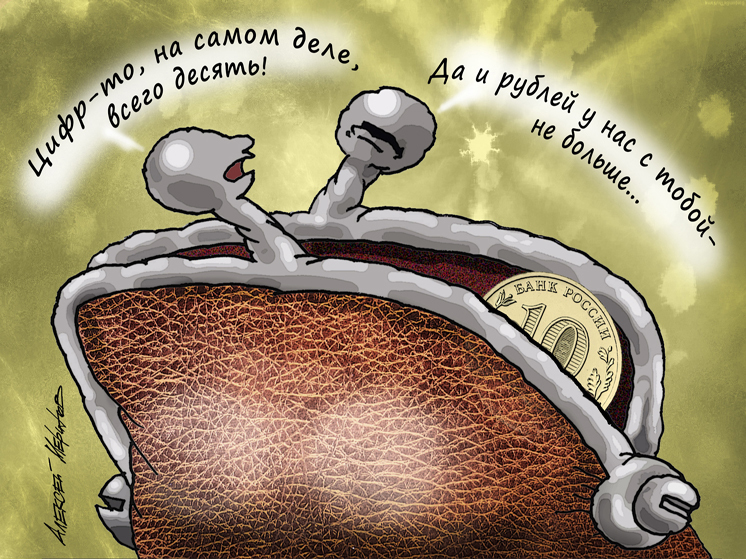Millions of Russians willingly play with virtual money, losing real money
In the first half of 2024, 59% of financial pyramids identified by the Central Bank of the Russian Federation attracted clients by promising investments in cryptocurrency. This is reported on the regulator's website. Clicker games and meme coins were often used to promote fraudulent schemes, and in 14% of cases, financial pyramids were designed as economic games with a pseudo-investment component. Why Russians continue to bury their savings under the rubble of financial pyramids, despite all the warnings from the regulator, MK found out from experts.

These days, many in Russia have been recalling the sad events of 30 years ago — the collapse of MMM, the largest financial pyramid of the 90s. It would seem that the large-scale losses, which affected, according to various estimates, up to 15 million Russians, should have become a good lesson for the future for several generations. However, the statistics of the Bank of Russia say otherwise: in the first half of 2024, the regulator identified 3,495 entities (companies, projects, individual entrepreneurs) with signs of illegal activity, and this is almost 43% more than in the same period last year.
Moreover, in the first half of the year, 1.5 times more Internet projects with signs of financial pyramids were identified, including in social networks and instant messengers, than in the same period last year. In total, the Central Bank of the Russian Federation identified 1,723 entities with such signs, the vast majority (99%) of which worked online. Sometimes, to promote their schemes, fraudsters disguise them as clicker games (online games that offer to receive a «virtual coin» for touching a finger on a smartphone screen or for clicking a computer mouse on a game character) and meme coins (virtual coins that are issued «as a joke», and it is immediately stipulated that the rate will grow and you can earn money, but no one gives any guarantees of a refund).
According to the Central Bank of the Russian Federation, more than 14% of illegal projects operated in the form of economic games, and 59% of entities with signs of financial pyramids accepted contributions in cryptocurrencies, and 36% accepted contributions through foreign services. Fraudsters on the topic of the day often use the theme of sanctions and allegedly offer trading in foreign assets, bypassing the imposed restrictions.
Pyramids disguised as online games are fraught with more than just financial losses. For example, in Samara, a tragedy occurred with a teenager who was carried away by the clicker game Hamster Kombat, popularly known as «Hamster». The essence of the game is that the participant must click on the picture of a hamster in Telegram, this is called «tapping the hamster», and for this he is allegedly «credited» with coins. But this is not just «moving pixels on the screen» — the developers promised to later convert the «accumulated» money into real cryptocurrency. The boy was so carried away by the process that he took the smartphone into the bathroom and put it on charge. However, from the wet hands of the player, who continued to click on the animal, the phone accidentally slid into the water, which led to the instant death of the teenager.
According to lawyer Ilya Rusyaev, the transition of financial pyramids to the crypto world is caused, firstly, by the fact that cryptocurrencies provide a high level of anonymity: this makes it difficult to track money flows and identify the organizers. Secondly, the lack of a clear legal status of cryptocurrencies in Russia creates a legal vacuum that is used by fraudsters. Thirdly, the excitement around cryptocurrencies and the high volatility of their rates allow pyramids to disguise themselves as “high-yield investments” in new technologies. “As a rule, the founders of financial pyramids create their own “cryptocurrency” with a small cost, unlike, for example, the well-known bitcoin, and offer to invest in it,” says Meri Valishvili, associate professor of the Department of Public and Municipal Finance at the Plekhanov Russian University of Economics. “I would like to note that the deceived participants of such “investment programs” are not just gullible and naive people: most of these “investors” are driven by banal greed, the desire to get rich instantly.” Meanwhile, control over the emission of their own token allows the organizers to manage liquidity, creating an artificial rise and fall of the coin on the right information occasions, creating the illusion of a market.
“Criminal cases are never opened for many financial pyramids, since it is extremely problematic to collect evidence without involving cryptocurrency specialists,” says Grigory Osipov, Director of Investigations at the company “SHARD”. A successful example is the criminal case on the “Finiko” pyramid, but even it has been going on for several years. The order of losses from the activities of financial pyramids involving cryptocurrencies for 2023 is more than $100 million, and the number of their participants is at least 1.5 million people, the expert claims.
Meanwhile, as experts say, it is easy to prevent getting into a financial pyramid: just do not respond to “tempting” offers to “make good money” on social networks, do not transfer money to unverified accounts, inquire about the history of the company you want to work with and whether it has an official license to provide financial services.


